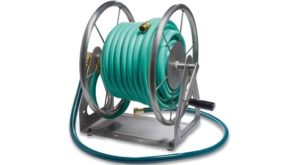Ahhh, gardening. While so complex and diverse, gardening is now becoming a necessity even among urban dwellers. And some people, in fact, are already incorporating it as a lifestyle.
But how do you get started with gardening for yourself if you don’t know much about it in the first place?
Read on and discover 10 useful gardening tips for beginners like yourself, and see if you won’t begin to develop a green thumb soon after.
Let’s get digging and planting!
Table of Contents
- How to Do Gardening As A Beginner
- 1. Know Your Area
- 2. Prepare Your Soil
- 3. Choose Beginner Friendly Plants
- 4. Implement Proper Plant Spacing
- 5. Use A Plant Journal
- 6. Water At The Right Time
- 7. Incorporate Mulch
- 8. Keep Seed Packets In A Photo Album
- 9. Consider Mixing Annuals And Perennials
- 10. Maintain your gardening tools
- Gardening Isn’t As Complicated As You Might Think
How to Do Gardening As A Beginner
Starting your own garden is a very rewarding past-time. You can do it as a hobby to fill your place with flowers, or with spices and vegetables that you can actually use in the kitchen.
You can even plant plants that you can gift to friends on special occasions. Eventually, you can expand your gardening into a business, especially if it thrives. And though you might be tempted to say that gardening is just for people with “green thumbs,” learning the following 10 basic tips in starting your own garden can help you go a long way.
1. Know Your Area
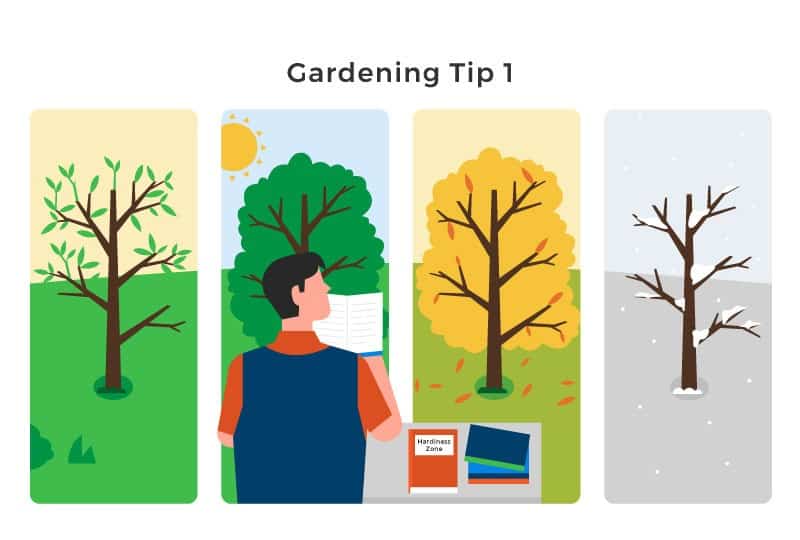
The first thing to consider for your garden is the region you are in. Plants are affected by the climate, sun exposure, and soil type in your region. Understanding how the season changes can help you determine the proper time on which you can start growing which kind of plant.
So figure out what plants are native to your region. This doesn’t mean that you can’t grow plants that aren’t native in your area, but it would be easier to start with a plant that naturally grows in your local weather, temperature, and soil.
If you want to have a vegetable or flower garden, then you should plan your garden according to your hardiness zone. In fact, determining your hardiness zone will truly aid you in identifying which plants should best thrive in your garden.
2. Prepare Your Soil
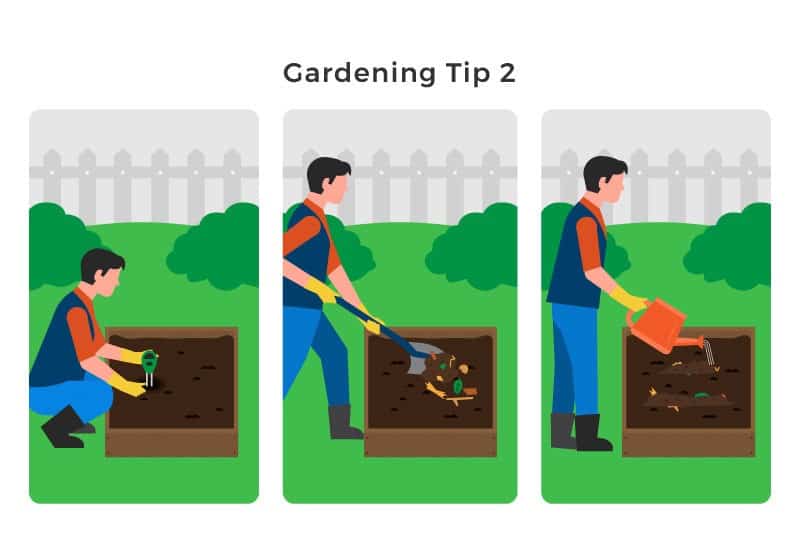
The health of the soil you are going to use is one key factor in determining the survivability of your garden. It is suggested that the soil should be evenly moist, well-aerated, and has the right pH.
Before planting, water your soil enough to make it moist. Less water may not be sufficient to soak the ground, while too much water may result in soil clumping, which may hinder root growth.
Meanwhile, the air underground is as important as the air above. The air in soil produces certain gases that are beneficial to the plant.
And then the pH of the soil should be tested. There are kits you can buy to test the soil, but if you can’t find one, there’s another thing you can do to improve the health of the soil, and that is adding compost.
Not only would the compost moderate the soil pH, but it will also help keep the soil aerated. And this step of soil preparation should be done weeks before your planned planting.
3. Choose Beginner Friendly Plants
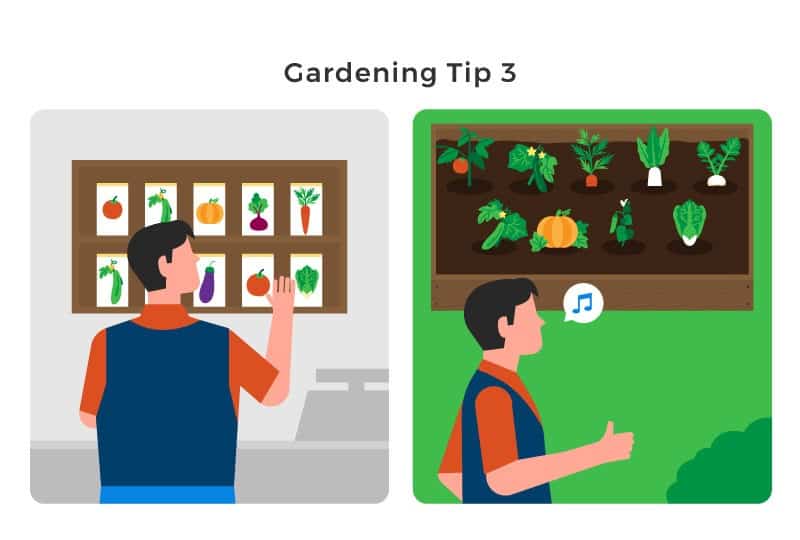
For beginners, starting on a vegetable garden is something really feasible as many veggies are easier to grow compared to flowering plants.
Some of these vegetables also have a reputation to thrive despite the fact that some beginner gardeners are notorious “plant killers.”
A few of the plants that are excellent for beginners include
- Lettuce and other leafy greens
- Tomatoes, cucumbers, carrots, radishes, turnips, zucchini, pumpkins, and green beans.
Knowing your first and last frost dates will also help you estimate the frost danger for your garden. When you select your plants, make sure that you use your zone number for you to know your frost-free days.
To determine your frost-free days, count the days between the first and last frost dates. The United States has approximately 120 frost-free days. If you opt to grow corn that takes 80 days to mature, then you are able to do so.
However, if the variety of corn you choose to grow takes 150 days to mature, then harvest is the last thing you would get because those frost days will take over your crops before they mature.
4. Implement Proper Plant Spacing
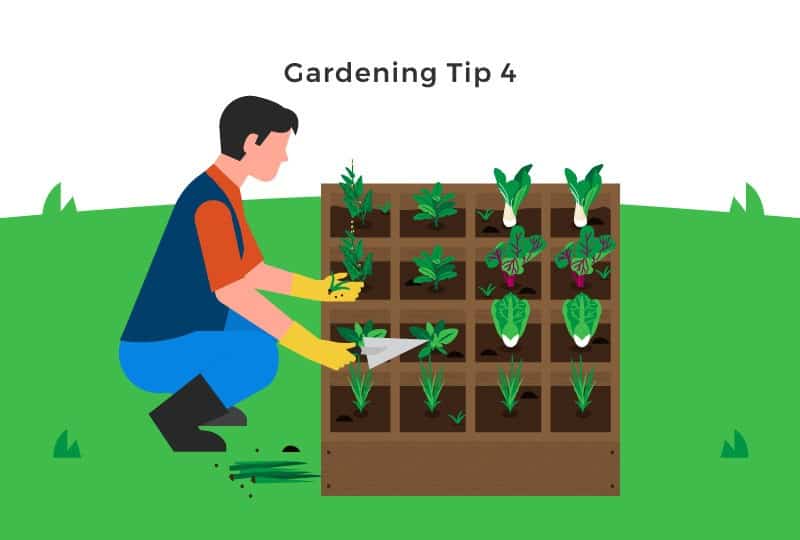
That is if you plan to have multiple plants at once.
If you want to grow several plants at once, you should try practicing the square-foot gardening method. Basically, this method is a simple trick of creating orderly, small, yet highly productive kitchen gardens. This technique was pioneered by the retired engineer and backyard gardener, Mel Bartholomew.
Accordingly, the concept of square foot gardening is to create a small garden bed and divide it into a grid of 1-foot squares. You can then plant seeds and seedlings of your preference according to density based on plant size (example: plant only one tomato seedling per square, compared to around 10 radish seeds per square).
If you are focused on rearing a vegetable garden, this method should be excellent for limited spaces.
5. Use A Plant Journal
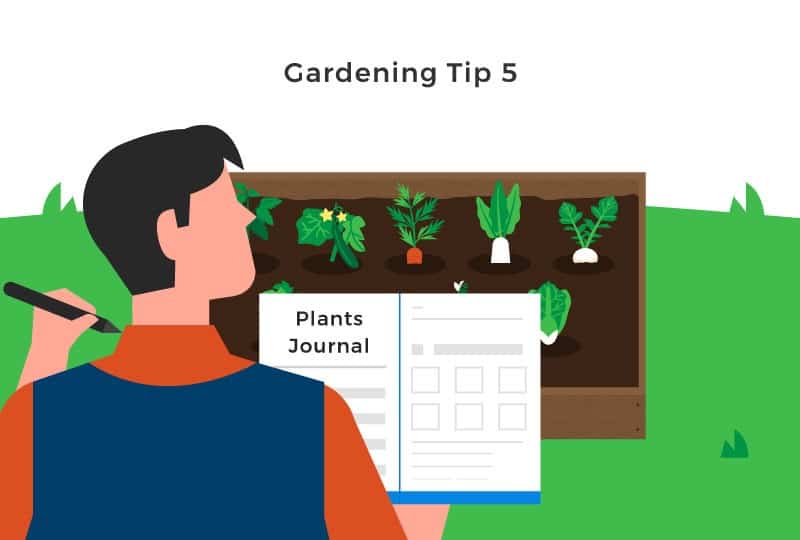
This one is quite basic. You just have to set a journal as your plant journal so you can keep track of your plants (and those soon to be planted).
You can also purchase a specialized gardening journal that is designed for tracking your garden, the fertilizers you need, the pests that you might encounter, and a sample planting calendar.
6. Water At The Right Time
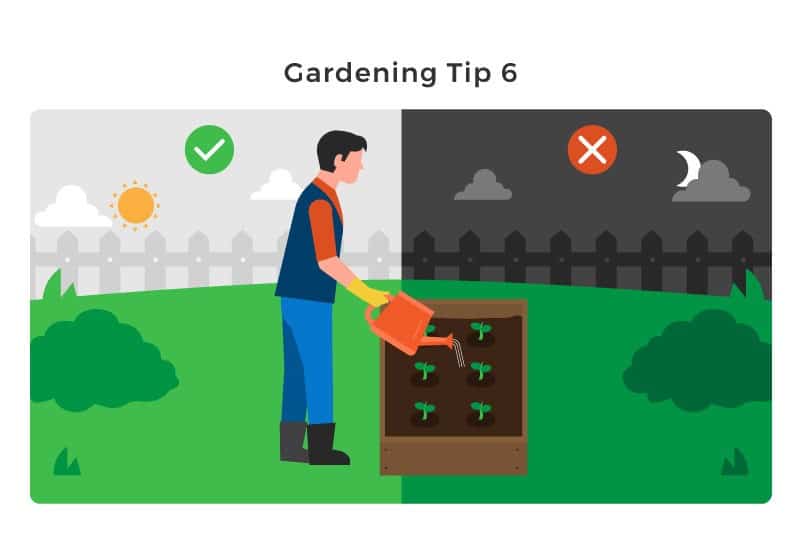
Vegetable gardens should be watered in the morning before the hottest part of the day in order for the water to avoid evaporating before it soaks into the soil.
Note that healthy soil is known to be approximately 24% water. Your garden soil should not have too much or too little water. The best soil also has both large and small pore spaces. If your soil has a lot of pore space like sandy soils, water quickly drains through it and cannot be utilized by plants.
On the other hand, if you have dense, tightly packed clay or silt soil, your soil may be clogged with water as there is little pore space in these kinds of soil. This kind of soil may even suffocate the roots of your plants and prevent helpful soil organisms to aid the growth of your plant.
It is ideal to water deeply (around 2 inches) and less frequently (once a week is perfect) so the roots of your plants can grow nice and deep.
For seeds and seedlings that are for transplanting, you can water them daily or according to your hardiness zone and according to the watering needs of every plant.
7. Incorporate Mulch
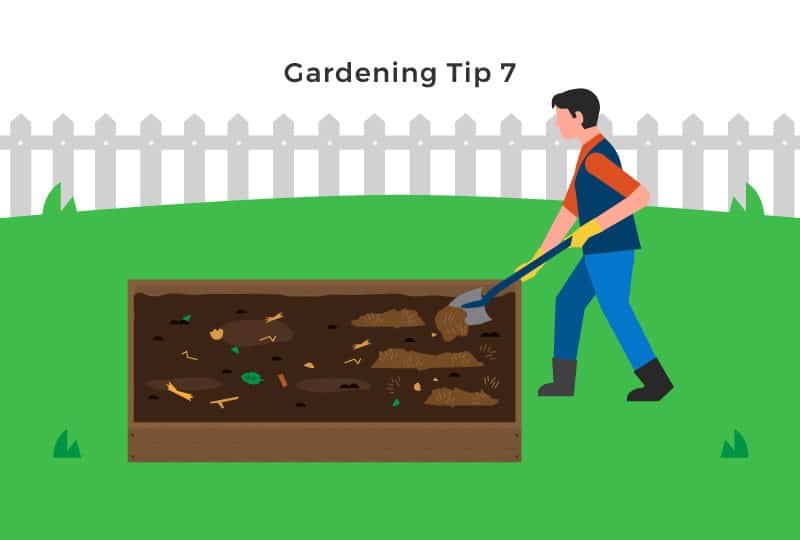
Now that you have determined and learned how to improve your garden soil, it would be best to also incorporate mulch to your garden.
Aside from giving your garden an aesthetic appeal and a more cohesive look, mulch prevents the growth of weed, moderates the temperature of the soil, and conserves soil moisture.
If you have bare soil, mulch prevents it from cracking and baking in the sun, which can hinder water absorption when you irrigate.
So use organic mulch in a typical vegetable or flower garden, but choose to use pumice, pebbles or stones if you are trying to grow cacti and succulents.
Moreover, adding compost can also improve the condition of your garden soil. The silty or clay texture of your garden soil will be radically improved from the compost being mixed in.
Before incorporating mulch, put compost and other organic material into your garden soil since they can hold the soil particles together in aggregates and therefore help in retaining moisture.
8. Keep Seed Packets In A Photo Album
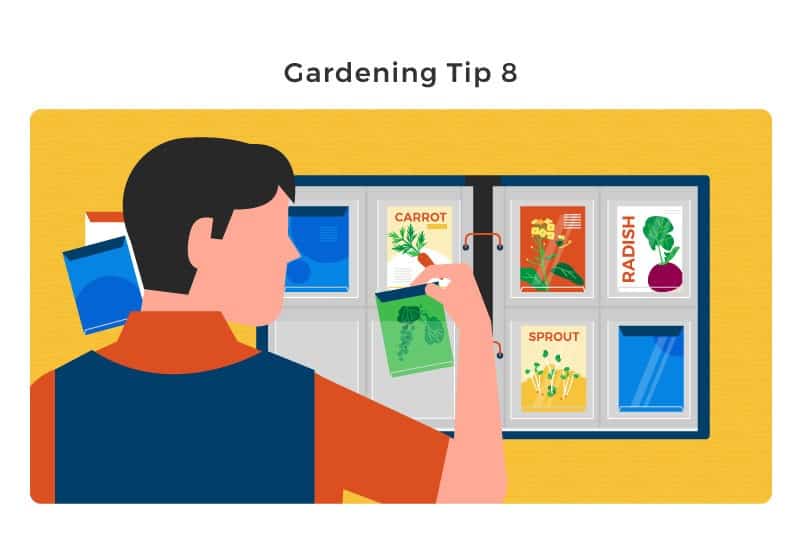
If you are fond of purchasing seeds from your local garden shop or supermarket, sort your seed packets by using a photo album.
This way, you can easily find the seeds you are looking for in case you want a new batch for sowing. The photo album could also store your seed packets properly and will prevent the seeds from spilling out.
9. Consider Mixing Annuals And Perennials
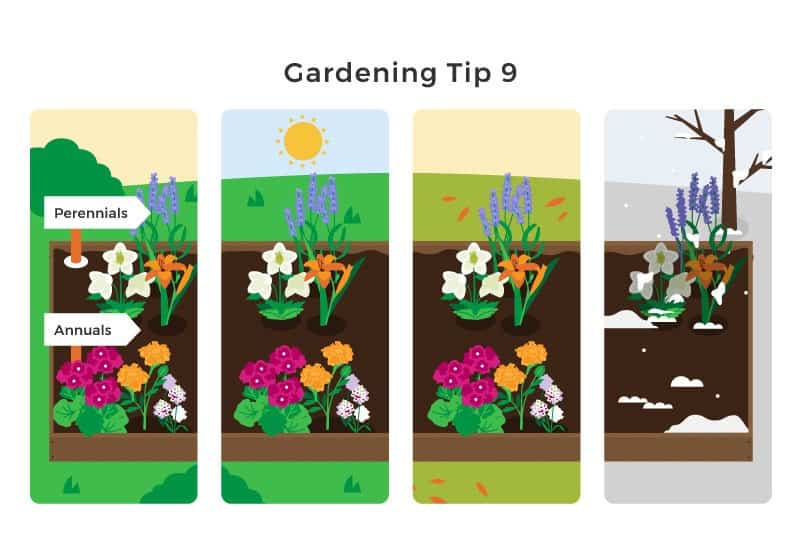
For flowering plants, consider mixing annuals and perennials together.
Annuals are those plants that last for a year, while perennials are those that grow over many years. Mixing them in your garden will allow leverage for your flowering plants. Once the annuals wither, the perennials will take their place.
Annuals should be replaced every year while perennials spread and thrive for a lot of years. The blooms of annuals are usually bright and last from spring through the first frost. Meanwhile, the blooms of perennials don’t last long and usually fall off.
Annuals may require pruning and fertilization despite their short life span. As for perennials, their roots spread outward so it is necessary to divide them every few years.
10. Maintain your gardening tools
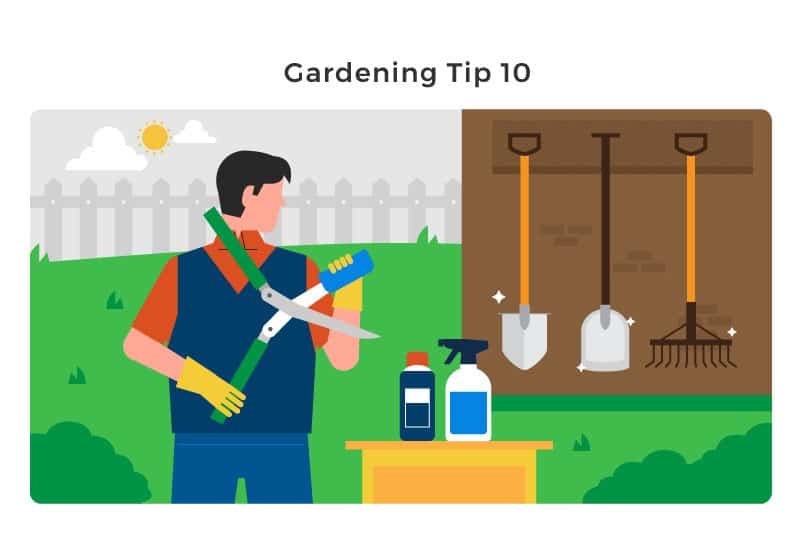
Take care of your tools and other gardening essentials.
Your trowel and your transplanter are your main tools, so make sure you have sturdy ones. A cultivator and some heavy-duty garden gloves are also needed for gardening. A cultivator can loosen hard soil that has been packed for a long time.
Meanwhile, you can’t afford not to use garden gloves since they protect your hands from spikes and thorns; they also keep your hands clean. Of course, you have to maintain and clean up these gloves after use.
One way to keep your sharp gardening tools working hard is to store them in a self-sharpening and self-cleaning mixture of sand and mineral oil. Put the mixture in a plastic pot and you’re ready to go. Make sure you wipe your tools and dry them out first so you can avoid rust from penetrating.
Gardening Isn’t As Complicated As You Might Think
The science and art of gardening may sound complex as a whole, but it’s never that complicated. There are simple principles to apply, many of which I have already discussed in the above 10 tips.
So, in case you want to get serious about growing your garden, all you need to do now is take all those tips and techniques to heart. Understand the principles behind each one, and be ready to transform your garden into a blossoming one — all year round.
Happy tilling, planting, and watering!




